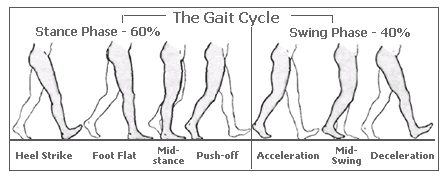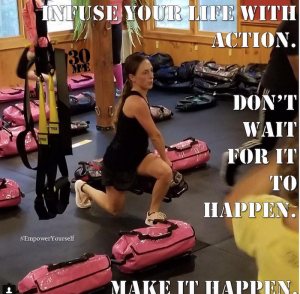Real World Strength Training Isn’t Just Up & Down
2018-11-19
Jessica Bento, Physical Therapist (Creator of DVRT Restoration, DVRT Pelvic Control, & DVRT Shoulder Course)

I’m sure most have heard the phrase “train movement not muscles” but do we really know how to apply that? As I scroll though my social media feeds all I see is people working in one plane of motion. Don’t get me wrong, every once in awhile we see someone doing a rather crazy movement in the namesake of being “multi-planar” and/or “fascial training”. Real strength training with these concepts doesn’t have to look so different than what we think of the more popular versions. However, there is a difference in how we think about strength training when we truly understand movement.
Our bodies are made to move, not to stand in one place. We are meant to move with fluidity and in many different ways. Look how we walk, run, jump, and just do things in daily life that actually require a great deal of complex movements. Often far more complex than anything we do in the gym. I have to ask the question…why is our strength training lacking so much in this simple concept?
The reality is that most people purely regard strength as a quality of load. However, research study after research study shows that this is simply not the case! (HERE and HERE show studies that show load doesn’t equate to most muscle used!) The REAL question becomes how do we program, progress, and teach these concepts that most people find quite confusing. So let’s start with the basics…there are three planes of motion. Sagittal, Frontal, and Transverse.
- Sagittal = forward or backward
- Frontal = side to side
- Transverse = rotational

So what are sagittal plane exercise? Well, for example they would consist of swings, traditional deadlifts, push ups, squats, or anything we tend to do in the gym with our feet planted firmly into the ground or a fixed position. Mostly what people would see as strength training exercises.
This is where people get stuck and tend to focus a lot of their programing typically because a lot of the time this is the position where you tend to be able to lift the most weight. Of course people will throw in a lateral lunge and say they are programming more planes of movement like a frontal plane movement pattern but is that really enough?
Is that really how the body moves? Is that really training movement? Can’t we do better than that? Shouldn’t we be replicating live movement?
To give you an example a movement that we take for granted all too often is walking. When we walk we move through all planes of motion, so why are we not training in all planes of motion? If something as simple as walking involves multiple planes of motions why does are training not?

One, I think it becomes overwhelming for people to really program planes of motion into their workouts and two, I don’t think people really understand how you can do so very easily, and then three sometimes the tool becomes a limiting factor.
Enter in DVRT. Programming planes of motion has been a part of DVRT since the inception. It allows us to stop being so fixated on weight and start looking at movement.
In DVRT we program planes of motion from easiest to hardest. Sagittal, Frontal and Transverse in that order. So what does that look like with lets say a hip hinge?
Bilateral Deadlift
Lateral Deadlift
Rotational Deadlift
https://www.instagram.com/p/BVlNFe5l2DD/
DVRT Master, Paige Fleischmann, shows how movement, planes of motion, impacts how we can create hip hinge patterns in many different forms.
But it doesn’t really stop there with the deadlift in DVRT. We actually have about 6 deadlift variations all focusing on changing planes of motion and also resisting planes of motions.
Add in:
Forward Deadlift
Crossover Deadlift
Reverse step or slide Deadlift
https://www.instagram.com/p/Bpk88zlAhAG/
So its pretty amazing to see what opens up if you really think about movement and the available planes of motion you have to train in.
So I think once you know where to start you will be able to see where it goes. You have to earn the progression and by earn I mean you have to understand why you would be choosing that particular progression of movement.
It then can be progressing into moving in one plane of motion and resisting motion in another. Is your mind a bit overwhelmed right now? Well, it shouldn’t be, if you think about our MAX Lunge is one of the easier exercises to see the concept of moving in one plane while resisting another. Here the Ultimate Sandbag really allows us to add in external load and manipulate it in a way you just can’t with other tools.
So lets break it down, the MAX lunge involves a reverse lunge, so movement in the Sagittal plane but the Ultimate Sandbag is moving in the Transverse plane, and here is another catch! Your also trying to resist frontal plane forces. Mind blown!? I bet you might look at the MAX lunge and what strength training can be a bit differently now. That is why there are so many progressions to the movement…its actually a very challenging movement when completed at the highest progression.
Hopefully you can at least see how easy it is to actually start programming planes of motion into your workouts as well as the endless possibilities DVRT lends itself. Our variations of strength training are trying to answer the two most important questions….the why’s and how’s!
Learn more about how DVRT is changing the way we see, use, and benefit from the big world of functional strength training. Save 30% all throughout our DVRT site with coupon code “holiday” HERE

© 2025 Ultimate Sandbag Training. Site by Jennifer Web Design.






